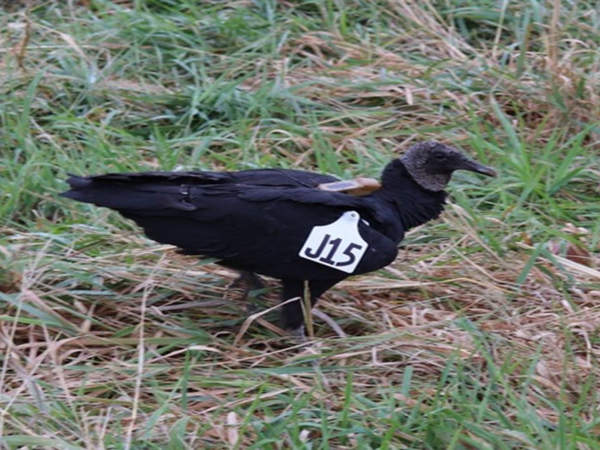The Clean-Up Crew: Turkey Vultures
By Glen Wunderlich
It can happen at any time – even in broad daylight, as one unlucky motorcycle driver has learned. With a loud bang, attention was turned to the dirt road, where an unfortunate young man came sliding by. He had just demolished a whitetail doe, a motorcycle, and parts of himself. The slide measured some 150 feet and concluded in front of me.
After the paramedics left with the driver and the county police did their paperwork, a dead deer lay mere feet from the road’s edge. It was time for me to “carry on” with the clean-up detail, because leaving the animal in place was not a good option for various reasons.
I dragged the carcass to an open field, where it could be spotted from the air, and that’s exactly what happened. As I motored to inspect the site a week later, several turkey vultures were spooked and landed atop a hunting shack waiting for me to clear the area. They were doing the dirty work of recycling the spoiled meat.
According to one of our abundant governmental agencies, the Centers for Disease Control and Prevention, some quarter million crashes annually are blamed on animals – certainly not oblivious drivers. That’s a lot of road kill and that’s a good enough reason for increases in numbers of turkey vultures – sometimes referred to as buzzards.
They are easily recognized up close by their bald red heads, although juveniles have black heads. When in flight, one can distinguish them from other large birds, such as hawks, by a tipping or rocking motion when soaring with their outstretched wings in a V-shape. One can also notice that the outline of their wing tips against the sky appears similar to fingers.
Interestingly they are well designed for doing the work of consuming rotted meat by poking their bald heads well inside body cavities. The head comes out virtually clean, because not much can stick to the skin; that which does is easily baked off in the sun.
They are not birds of prey and are the only scavenger birds having no ability to kill for their meals, although I have seen them picking off insects in newly mowed hay fields.
In a 1986 study in Panama, Turkey Vultures found 71 of 74 chicken carcasses within three days. There was no time difference between finding concealed and unconcealed carcasses, and the only carcasses the vultures seemingly had trouble finding were the freshest ones. Even though the older carcasses emitted a stronger odor, the vultures showed a definite preference for eating fresher carcasses.
Before you write off vultures as disgusting oddities, hear out our last fun fact. Dead animals are a breeding ground for infectious disease, including those that can pass to humans. Vultures, all species, not just turkey vultures, have strong acid in their stomachs that destroys these toxins. By eating carrion, vultures prevent the spread of rabies, botulism, anthrax, cholera, and more.
They are large birds measuring up to 32 inches in height with a wingspan of six feet and have a life expectancy of 20 years or more. However, what makes them such fantastic soaring birds is their light weight of only three pounds. They will find thermals and soar for hours without flapping their wings at heights beyond 4 miles. When migrating, they have been known to travel 200 miles in one day.
With faces only a mother can love, the vultures’ dirty work is the epitome of recycling – even if we can’t stomach the thought.






